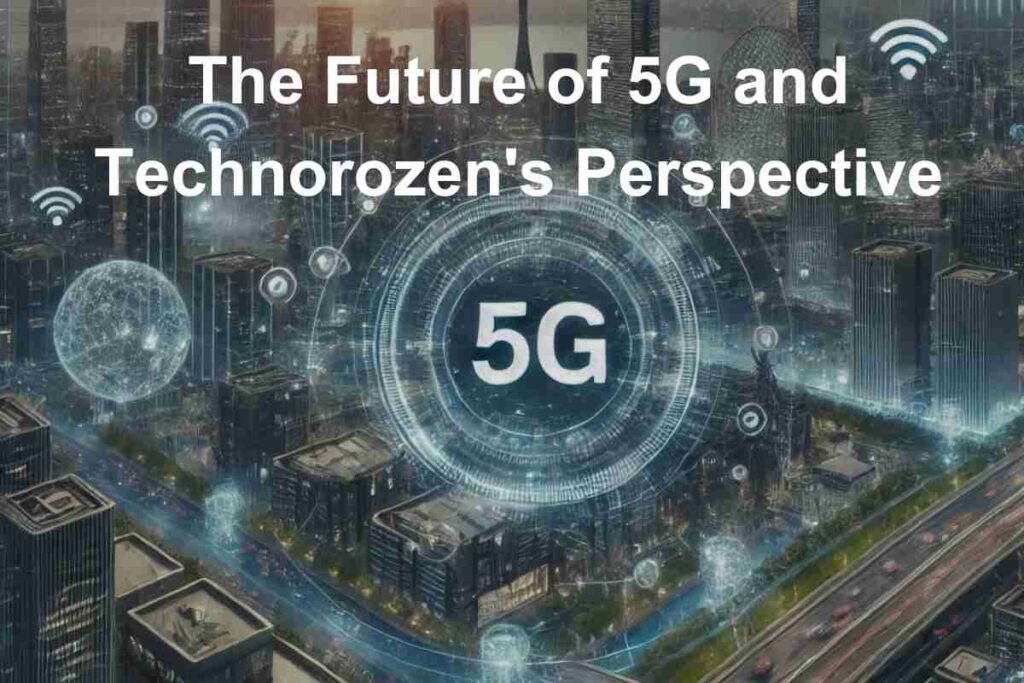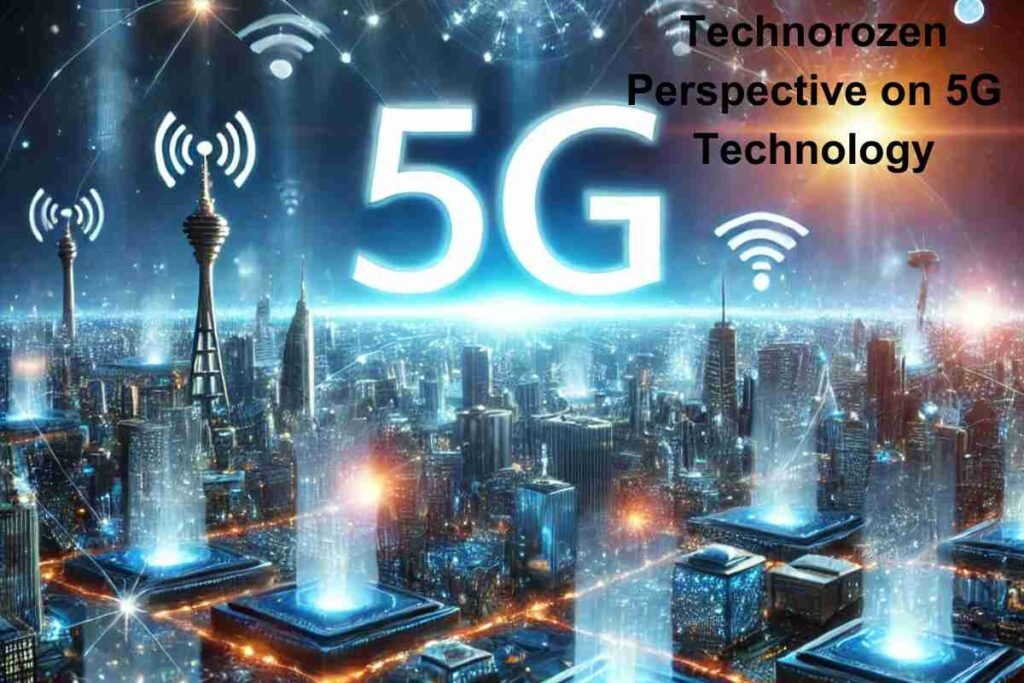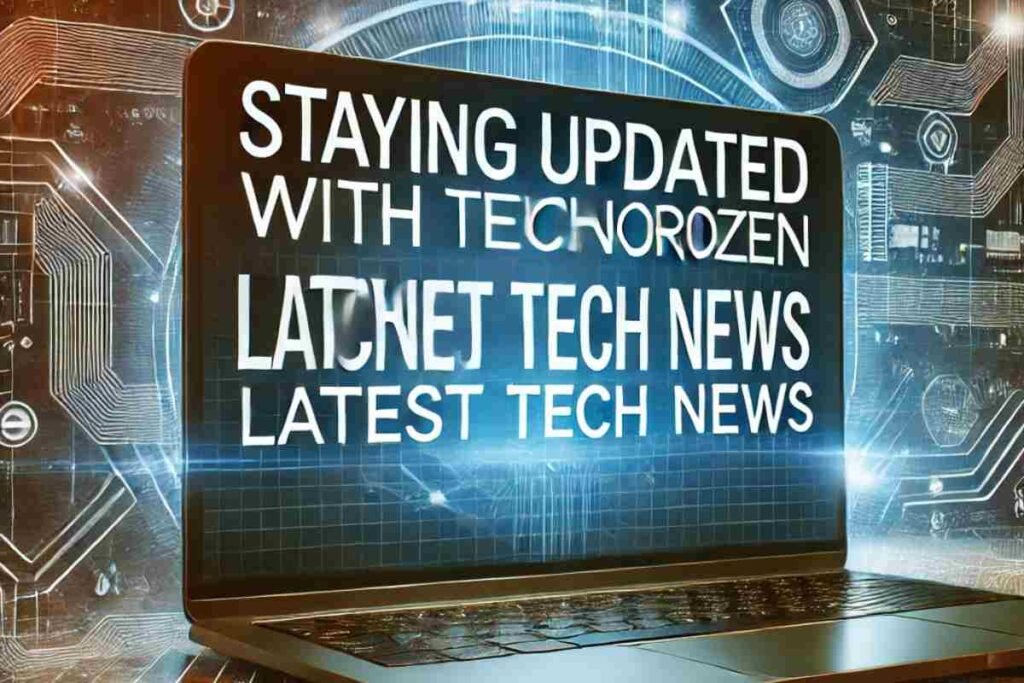Technorozen Perspective on 5G Technology is revolutionizing the way we connect, delivering unprecedented speed, ultra-low latency, and massive device connectivity that is set to redefine industries and everyday digital experiences.
Unlike its predecessor, 4G LTE, which primarily focused on faster internet browsing and mobile streaming, 5G networks introduce advanced capabilities such as millimeter wave (mmWave), network slicing, and edge computing
At Technorozen . com , we analyze the 5G infrastructure, deployment strategies, and industry applications to understand how this next-generation wireless technology will impact businesses and consumers.
Understanding 5G Technology

5G technology is the next-generation wireless network that delivers faster speeds, lower latency, and enhanced connectivity for a wide range of applications.
What is Technorozen Perspective on 5G Technology?
Technorozen Perspective on 5G Technology is the fifth-generation wireless technology designed to provide faster speeds, improved reliability, and support for more connected devices. It builds upon previous generations like 4G LTE, introducing innovations like mmWave, MIMO, and network slicing.
Key Features of 5G
- 5G Speed – Offers ultra-fast data transfer rates.
- 5G Latency – Reduces delay in data transmission.
- 5G Connectivity – Supports more devices simultaneously.
- 5G Infrastructure – Utilizes advanced radio waves and networking techniques.
Benefits and Applications of 5G?
Technorozen Perspective on 5G Technology offers enhanced speed, ultra-low latency, and massive connectivity, driving innovation across industries like healthcare, manufacturing, and smart cities.
Advantages of 5G Technology
- Enhanced mobile broadband (eMBB) for faster data speeds.
- Ultra-reliable low-latency communication (URLLC) for real-time applications.
- Massive machine-type communication (mMTC) for IoT connectivity.
Real World Applications of 5G
5G technology powers real-world applications like smart cities, autonomous vehicles, remote healthcare, and industrial automation, transforming connectivity and efficiency.
5G in Healthcare
- Remote surgeries and telemedicine advancements.
- Real-time patient monitoring using IoT devices.
5G in Smart Cities
- Improved traffic management with connected infrastructure.
- Enhanced public safety through real-time data analytics.
5G in Manufacturing
- Automation through AI and IoT integration.
- Smart factories with seamless machine-to-machine communication.
How 5G Will Change Business Technorozen Insights?
For businesses, the Technorozen perspective on 5G technology highlights the potential to transform operations and customer engagement.
Key areas of impact
- Remote Work: Faster, more reliable video calls and remote collaboration
- Healthcare: Real-time diagnostics and remote surgeries
- Retail: Personalized shopping experiences through AR/VR
- Manufacturing: Smart factories and automation
5G is also crucial for edge computing, where data is processed close to the source, reducing delay and improving performance.
Technorozen Perspective on 5G Technology in Developing Countries
In countries like India, Pakistan, and parts of Africa, 5G is still emerging. But Technorozen sees it as a game-changer for education, digital banking, and agriculture.
Benefits for these regions include
- Distance learning with seamless video classes
- e-Healthcare access in rural areas
- Precision agriculture using sensors and drones
Challenges and Concerns of 5G Deployment
Technorozen Perspective on 5G Technology deployment faces challenges such as high infrastructure costs, security risks, spectrum allocation issues, and concerns over potential health effects.
5G Security Risks
- Increased cyber threats due to expanded attack surfaces.
- Need for enhanced encryption and network security measures.
5G Infrastructure and Cost
- High costs associated with network rollout and deployment.
- Need for new cell towers and spectrum allocation.
5G Health Concerns
- Ongoing debates about potential health effects of 5G radiation.
- Scientific studies assessing long-term exposure risks.
Technorozens Take on 5G and Cybersecurity
With great speed comes great responsibility. Technorozen’s perspective on 5G technology also includes a critical look at cybersecurity risks.
Possible threats include
- Increased entry points for hackers
- Vulnerable IoT devices
- Sophisticated cyberattacks using AI
Companies and governments must invest in network slicing, end-to-end encryption, and AI-based security systems to counter these risks.
The Future of 5G and Technorozen’s Perspective

The future of 5G technology is set to revolutionize industries, and Technorozen’s Perspective on 5G Technology highlights its role in driving innovation and digital transformation.
5G Trends and Predictions
- Expansion of 5G adoption in rural and urban areas.
- Integration with AI, edge computing, and cloud technologies.
Technorozen’s View on 5G
Technorozen Perspective on 5G Technology emphasizes the importance of seamless connectivity, innovation, and security in the 5G era. Technorozen supports next-generation networks by providing cutting-edge solutions in wireless communication and digital transformation.
Role of Telecom Companies Technorozen View
Telecom companies are racing to provide 5G services. From AT&T and Verizon in the US to Jio and Zong in South Asia, deployment is expanding fast.
Technorozen advises users to check
- 5G coverage maps
- Device compatibility
- Data plans with 5G access
Conclusion
Technorozen Perspective on 5G Technology highlights the revolutionary impact of 5G networks on industries, from healthcare and manufacturing to smart cities and IoT. With its ultra-fast 5G speed, minimal 5G latency, and enhanced 5G connectivity, this technology is reshaping the way businesses operate and how people interact with digital ecosystems.
However, alongside these advancements, challenges such as 5G infrastructure costs, 5G security risks, and spectrum allocation hurdles must be addressed to ensure a seamless global 5G deployment. As 5G adoption continues to grow, businesses and governments must collaborate to create secure, scalable, and efficient 5G solutions.
FAQs
What are the main benefits of 5G technology?
5G offers faster speeds, lower latency, and improved connectivity for various applications, including healthcare, smart cities, and manufacturing.
How does 5G differ from 4G LTE?
5G provides significantly faster speeds, lower latency, and increased device connectivity compared to 4G LTE.
What are the security concerns associated with 5G?
5G networks face cybersecurity threats, requiring strong encryption and security measures to protect data and devices.
How will 5G impact the Internet of Things (IoT)?
5G enhances IoT by enabling massive device connectivity, real-time data processing, and improved network reliability.
What industries will benefit the most from 5G?
Industries such as healthcare, transportation, manufacturing, and smart cities will see major advancements with 5G technology.
Is 5G safe for human health?
Scientific studies are ongoing, but current research suggests that 5G radiation exposure is within safe limits set by regulatory bodies.
What is network slicing in 5G?
Network slicing allows operators to create virtual networks within a single 5G infrastructure, optimizing resources for specific use cases.
When will 5G be fully deployed worldwide?
5G rollout is ongoing, with widespread global deployment expected by 2025-2030.


